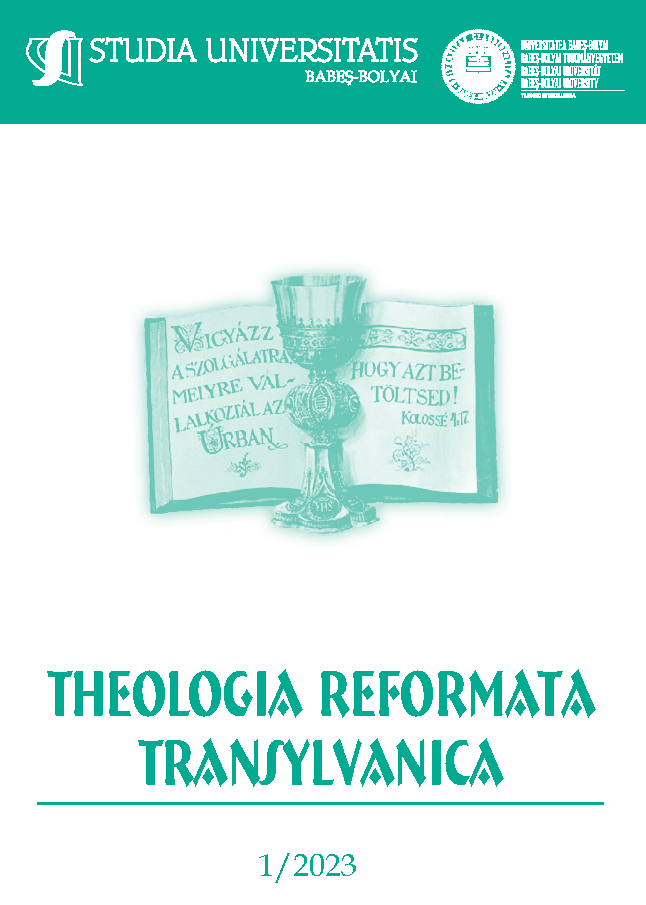KULTÚRÁK ÉS LELKISÉGEK TÖRÉSVONALÁN
AT THE CROSSROADS OF CULTURES AND SPIRITUALITIES
Author(s): Lehel LészaiSubject(s): Biblical studies, History of Religion
Published by: Studia Universitatis Babes-Bolyai
Keywords: Samaritan; Jew; Jesus; well; Gerizim;
Summary/Abstract: At the Crossroads of Cultures and Spiritualities. In the Gospel of John, Chapter 4, we read of a peculiar encounter. A Samaritan woman meets a Jewish rabbi at a rather unusual time of the day at a well. It is a difficult task to have a clear picture of who the Samaritans were exactly, but we may assume three theories about them. The first approach is connected to the view of how the Samaritans perceive themselves. They see themselves as the true Israel and everyone else as heretics. Their own Torah inherited from Moses is the genuine one, and the others have just falsified it. The second approach belongs to the Judeans. They regard as valid what we can read in the Jewish Old Testament, in the Second Book of Kings, Chapter 17, verses 24–41. According to this view, the Samaritans’ origin can be traced back to the Mesopotamian immigrants. Some Israelites mixed with pagans. After their return from the Babylonian captivity, the Jews refused to rebuild the Temple together with the Samaritans. This led to the building of a new temple by the Samaritans, and hence tensions arose between Jews and Samaritans. The third view can be called the scientific approach. According to this, there was no disruption in the 5th century BC between Samaritans and Jews. Assyrians settled the Samaritans. The Jews looked at them with suspicion because of their ethnic and mainly religious background. The actual drifting apart became obvious in the 2nd century BC and after their temple was destroyed. The Samaritans worked on their own Pentateuch and had their own priesthood, and these facts became a fundamental difference between them. Since then, the Jews have regarded Samaritans as pagans and as their enemies.In John 4, at the beginning, the woman sees in the man a traditional enemy, but her attitude slowly changes. She is not sure if her conversational partner is greater than Jacob, who was their highly esteemed predecessor. At a certain point of their discussion, the unnamed woman calls the rabbi “Sir” and regards him as a prophet. The woman has strong doubts about Jesus being the Christ to come and whom the Samaritans have been expecting. At the end of this conversation, the woman changes her attitude, speaks without hindrance about the young rabbi, and recognizes with her fellow villagers that this is the long-expected Saviour. The woman’s openness is remarkable, who is not stuck with her predefined ideas but is ready to listen carefully to the man whom at first she identified as her enemy. In this Gospel, we can read many stories. One of them is Nicodemus, who is not entirely sure about what Jesus asks of him. Jesus’s disciples are often perplexed and confused when their Master speaks to them. Here we can read of a woman who understands Jesus and recognizes Christ in him. She does not merely believe in Jesus but becomes a missionary among her fellow Samaritans. There is a huge difference between them at the beginning, but they slowly start to approach each other, and the woman is converted in the end. Her life is helped and influenced dramatically and existentially by the patience and understanding of Jesus.
Journal: Studia Universitatis Babeș - Bolyai Theologia Reformata Transylvanica
- Issue Year: 68/2023
- Issue No: 1
- Page Range: 42-59
- Page Count: 18
- Language: Hungarian

